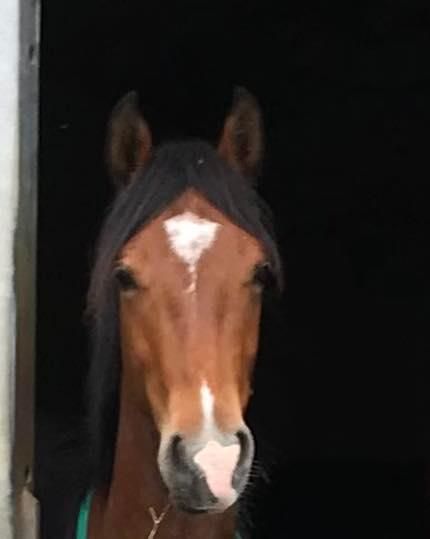Time for adjusting and reflection...
Posted on
A period of adjusting and reflection…

Hello everyone!
It has been an age since my last blog, simply because I had nothing that I thought was important to share, however, recently I have been through a period of reflection and feel I owe you all an explanation for the silence and what is happening at SJE.
Back end of last year I concluded that Jasper needed a lot more than I could offer with my lack of facilities and appropriate help, and offered him on loan, not an easy decision by any means, and for an unbacked 5yr old I had no expectations of anyone wanting him, but I was wrong! A fabulous lady came to see him and to cut a long story short, now has a well-mannered young horse enjoying his ridden career! I am thrilled for him and enjoy following his journey.
Then a disaster hit, December I lost Malachite, an absolute tragic accident occurred when the horses escaped their field and ran off up the road being involved in an RTC, Mal suffered at the scene and had to be put down, corrie was also hit by 3 cars and was held together by staples for a good few weeks. The details of this night have caused me to suffer and to this day I can re-live every second. Honestly the worst night of my entire life. So, my life was literally turned on its head -again- and I was suddenly faced with the fact that baby Mal was gone, Corrie was very poorly for a while and more to the point, now alone. Once the staples were out and she was able to go back out in the field she settled well and was soon back in work. She was a total legend and so brave after her accident to go back hacking.
During this time, I was starting to feel like I had had my fair share of bad luck, and from a coaching perspective I was not enjoying it, I couldn’t answer why I wasn’t, I just wasn’t, in fact I wasn’t enjoying anything, I stopped riding and announced my retirement from coaching. Literally everything in my life was dead. I knew my depression was going downhill but thought that was a normal reaction to the trauma, but I had no idea I had PTSD. I am not going to bore you with the other details regarding this, but after some time out and help, not to mention the epic support of my clients (!) I found myself again and began coaching again, day by day the passion came back, and the retirement was put on hold!
Later on, Corrie started showing some old problems coming back (non RTC related) and was on and off lame for ages, despite vet visits, physios, you name it I threw it at her, but a few weeks ago I had to admit defeat and she hung up her shoes from work. She has lived an eventful life, and her downright stubborn attitude has kept her going for many years, but although she can hooley around the field like a 3yr old, when she stops the evidence is clear that her joints are not as young as her brain! So, at 19yrs old she can now retire happily and comfortably.
What do I do now then? Well, there have been a couple of new faces join us recently, 2 Welsh mountain ponies, a yearling and a 3 yr old, so corrie can now embrace the role of mother which she is doing exceptionally at!! Why the Welshie’s? O.K. fair question, why not get another horse to ride? Why not just keep Corrie as she is? Well, truth be told, my own physical issues (arthritic knees and a back that belongs to a 90yr old!!) are part of the decision to do less riding now, and when you own your own horse the pressure to ride is much more than the pressure to ride a client’s horse occasionally, so that was a big part of that decision. The Welsh ponies have always featured heavily in my life, away from coaching I am an avid showing fan and have always had a pony or two to show, but as always, the circumstances have always put a stop to that, however now I feel that the time couldn’t be more right to pursue my passion for them properly. Corrie is an excellent nanny and is loving her new role in life, the ponies look up to her - literally! – and the little herd is incredibly happy. My hope is to resurrect my little stud and breed some top class show ponies, like I have always tried to do before life struck.
Will I continue with the coaching? Absolutely! Just because I am not actively riding myself doesn’t mean I don’t get a thrill from seeing you guys do well!
I also think it’s time for more social media work as well as blogs, I have neglected all outlets for too long now, so please keep an eye on the socials and “like and share” them to spread the word that I am back!
I cannot thank you all enough for your support over the past 8 months, it would have been a lot harder without you.
In loving memory of Cledlyn Malachite.
